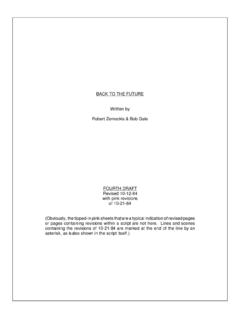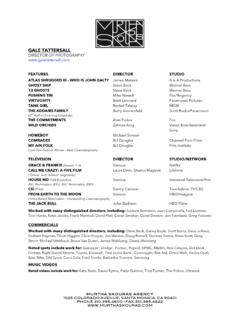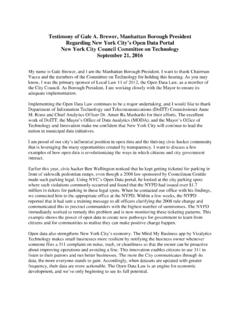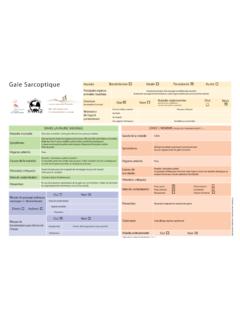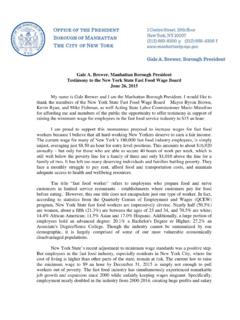Transcription of Qualitative Modelling
1 Nazaj na uvod / Back to Start Nazaj / Back Qualitative Modelling Ivan Bratko Faculty of Computer and Information Sc., University of Ljubljana Abstract. Traditional, quantitative simulation based on quantitative models aims at producing precise numerical results as answers to user's questions about the problem domain. Such precise numerical answers are often overly elaborate, and they contain much more information than it is actually needed. In every day life, humans use common sense to reason about problems qualitatively, without numbers. In the area of Artificial Intelligence, methods exist for Qualitative Modelling and simulation.
2 In this paper, we review some ideas of Qualitative reasoning and Modelling . We also discuss Qualitative data mining as an approach to the analysis of numerical data, and Q2 learning which combines Qualitative and quantitative approaches to Modelling from data. Keywords: Modelling , Qualitative , quantitative, simulation, data mining, Q2 learning Quantitative vs. Qualitative Modelling Traditional, quantitative Modelling and simulation give precise numerical answers. For everyday use, such answers are often overly elaborate. For example, consider the bath tub in Figure 1. Assume the tub is initially empty, there is a constant flow from the tap, and that the drain is closed, so there is no out flow.
3 What will happen? To answer this question, the physicist's solution would be to write down a differential equation model of this system, and run this model by numerical simulation. The numerical simulation would produce a table with, say, 1000 rows, giving the exact values of the level 8. of water at consecutive tabulated time points. The table would show, for example, that the level will reach the top of the tub at cm in sec. For everyday use, such an elaborate answer is overkill. A common sense answer that completely suffices for everyday purposes, and is actually much more appropriate, is instead something like this: "The water level will keep increasing and will eventually reach the top.
4 After this, water will be overflowing and cause a flood in the bathroom." This gives just a useful summary of a possibly large amount of quantitative information. The physicist's answer was quantitative, giving precise numerical information. The common sense answer was Qualitative , just giving a useful summary of the large amount of quantitative information. top Level zero Figure 1: Bath tub with some input flow and closed drain. Qualitative Modelling and reasoning in AI. The humans are good at common sense, Qualitative reasoning. Traditionally, computer- based methods are on the other hand mostly numerical -- just the opposite to common sense.
5 Can the common sense, Qualitative approach also be computerised? The area of Qualitative reasoning and Modelling in Artificial Intelligence aims at this ( Weld and de Kleer 1990). It is concerned with the formalisation of and algorithms for Qualitative reasoning about the world, producing Qualitative , non-numerical answers to questions that are typically answered numerically by "proper" physics. To emphasise the contrast between the "proper" physics as taught in schools, and the Qualitative , common sense reasoning about the physical world, the Qualitative physics is sometimes also called naive physics. 9. Principles of Qualitative abstraction Qualitative reasoning is usually viewed as an abstraction of quantitative reasoning.
6 Accordingly, in Qualitative reasoning some numerical details are discarded; instead, a rather simpler Qualitative summary of these numerical details is retained. There are many ways of abstracting away from detailed numerical information. Some abstraction principles are explained through examples in the following paragraphs. Numbers are abstracted into symbolic values and intervals. For example, consider the quantitative statement: Level at sec is cm. A Qualitative abstraction of this is: Level at time t1 is between the bottom and the top of the bath tab. Notice here that sec has been replaced by a symbolic time point t1. So instead of giving exact time, this just says that there is a time point, referred to as t1, at which Level has the given Qualitative value.
7 Regarding this Qualitative value, the whole set of numbers between 0 and has been collapsed into a symbolic interval A further abstraction would be to disregard the top of the tub as an important value, and simply state: Level at time t1 is positive, written as: Level(t1) = pos. Another Qualitative abstraction principle is to simplify the time derivatives into just directions of change. Such a Qualitative statement can be: Level at time t1 is increasing. Another very useful Qualitative abstraction principle is to simplify functions into monotonic relations. Consider for example the quantitative statement that states the relation between the amount of water and the level of water: Amount = f( Level) = 25 * Level2 + 45*Level.
8 A Qualitative abstraction of this can be: For Level 0, Amount is a monotonically increasing function of Level, written formally as: Amount = M+( Level). That is: if Level increases then Amount increases as well, and vice versa. Notice that this statement is very simple, it is based on common everyday experience. The Qualitative statement is also very general because it is true for every bathtub, regardless if its shape, it is actually true for every container. 10. Qualitative abstraction is related to Qualitative Modelling . Numerical models are an abstraction of the real world. Qualitative models are often viewed as a further abstraction of numerical models.
9 In this abstraction some quantitative information is abstracted away. For example, a quantitative model of the water flow in a river may state that the flow Flow depends on the level Level of water in the river in some complicated way which also takes into account the shape of the river bed. In a Qualitative model this may be abstracted into a monotonically increasing relation: M+( Level, Flow). This just says that the greater the level the greater the flow, without specifying this in any more concrete and detailed way. Obviously, it is much easier to design such coarse Qualitative models than precise quantitative models. Why Qualitative Modelling ?
10 Here we discuss some advantages of Qualitative Modelling with respect to the traditional, quantitative Modelling . Of course there are many situations where a Qualitative model, due to lack of precise numerical information, is not sufficient. However, there are many situations in which a Qualitative model has advantages. First, Qualitative Modelling is easier than quantitative Modelling . Precise relations among the variables in the system to be modelled may be hard or impossible to determine, but it is usually still possible to state some Qualitative relations among the variables. Also, even if a complete quantitative model is known, such a model still requires the knowledge of all the, possibly many, numerical parameters in the model.

